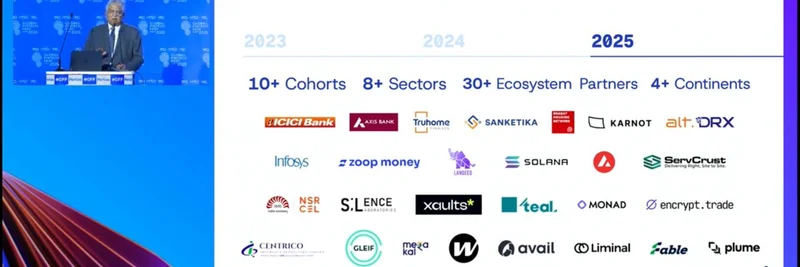Hey there, meme enthusiasts and blockchain buffs! If you're plugged into the crypto world, you know that the real magic happens when traditional finance starts shaking hands with web3 innovations. A recent tweet from hitesh.eth (@hmalviya9) perfectly captures this vibe, and it's got implications that could supercharge the meme token scene.
The Tweet That Sparked the Buzz
In his post, hitesh.eth shares his excitement about seeing banks, startups, and web3 projects team up to build a next-level digital infrastructure for finance. He points out that this could scale way beyond what we've seen with UPI in India – that's the Unified Payments Interface, a game-changing system that's made digital payments seamless for millions in the country.
The tweet quotes Rachit Agarwal (@0xagarwal), head of global expansion at Wormhole, who mentioned that Wormhole got a shoutout during Nandan Nilekani's talk on Finternet at the Global Fintech Fest in Mumbai. Nilekani, the brains behind India's Aadhaar and a big fintech visionary, is pushing Finternet – essentially a "financial internet" that uses blockchain to connect assets, identities, and payments in a unified, interoperable way.
As you can see in the image from the event, the slide showcases an impressive lineup of partners across cohorts from 2023 to 2025. You've got heavy-hitters like HDFC Bank and Infosys rubbing shoulders with crypto natives like Solana, Monad, Wormhole, Avail, and Plume. This isn't just talk; it's real-world collaboration happening right now.
Why This Matters for Meme Tokens
Meme tokens thrive on community, virality, and accessible tech. But let's be real – scalability and integration with real-world finance have been bottlenecks. Finternet's vision changes that. By building on blockchain tech, it promises to create a global financial network where assets move freely across chains and borders.
Think about it: Wormhole is a cross-chain messaging protocol that lets tokens and data zip between blockchains like Ethereum, Solana, and more. If it's getting integrated into something as massive as India's fintech ecosystem (which already handles billions in UPI transactions), imagine the liquidity floodgates opening for web3.
For meme tokens, this could mean:
- Easier On-Ramps: More users from traditional finance jumping into crypto, discovering and trading memes on chains like Solana, which is already a hotspot for tokens like Dogwifhat or Bonk.
- Scalability Boost: Projects like Monad (a high-performance layer-1 blockchain) are designed for speed and low costs – perfect for the high-volume trades that meme seasons demand. No more network congestion killing the fun.
- Real-World Utility: As web3 meshes with banks, meme tokens could evolve beyond hype, perhaps tying into payment systems or even RWA (real-world asset) plays.
hitesh.eth's enthusiasm resonates because it highlights a shift: crypto isn't an outsider anymore. It's becoming the backbone of future finance, especially in emerging markets like India, where blockchain adoption is skyrocketing.
Broader Implications for Blockchain Practitioners
If you're building or investing in memes, keep an eye on these cross-sector partnerships. They signal regulatory green lights and institutional buy-in, which often precede bull runs. Plus, with tools like Wormhole enabling seamless interoperability, the barriers between meme ecosystems on different chains are crumbling.
We've seen how UPI revolutionized payments in India – fast, free, and everywhere. Finternet could do the same for global finance, but on steroids with blockchain's transparency and programmability. For meme creators, this opens doors to tap into massive user bases and create tokens that aren't just jokes but have real economic ties.
In short, tweets like this aren't just noise; they're signals of the tide turning. Stay tuned to Meme Insider for more breakdowns on how these developments shape the meme token landscape. What do you think – ready for meme tokens to go mainstream in India? Drop your thoughts in the comments!


